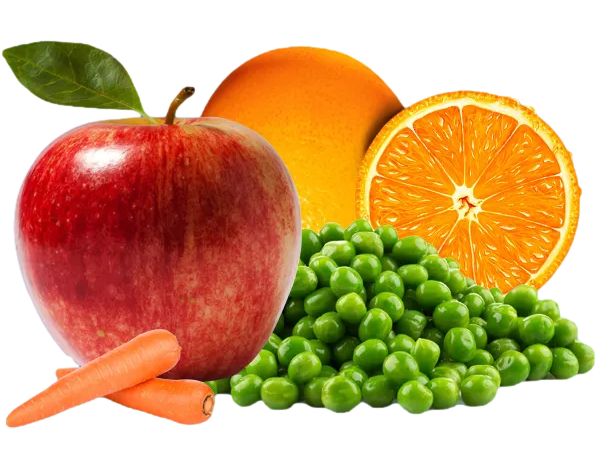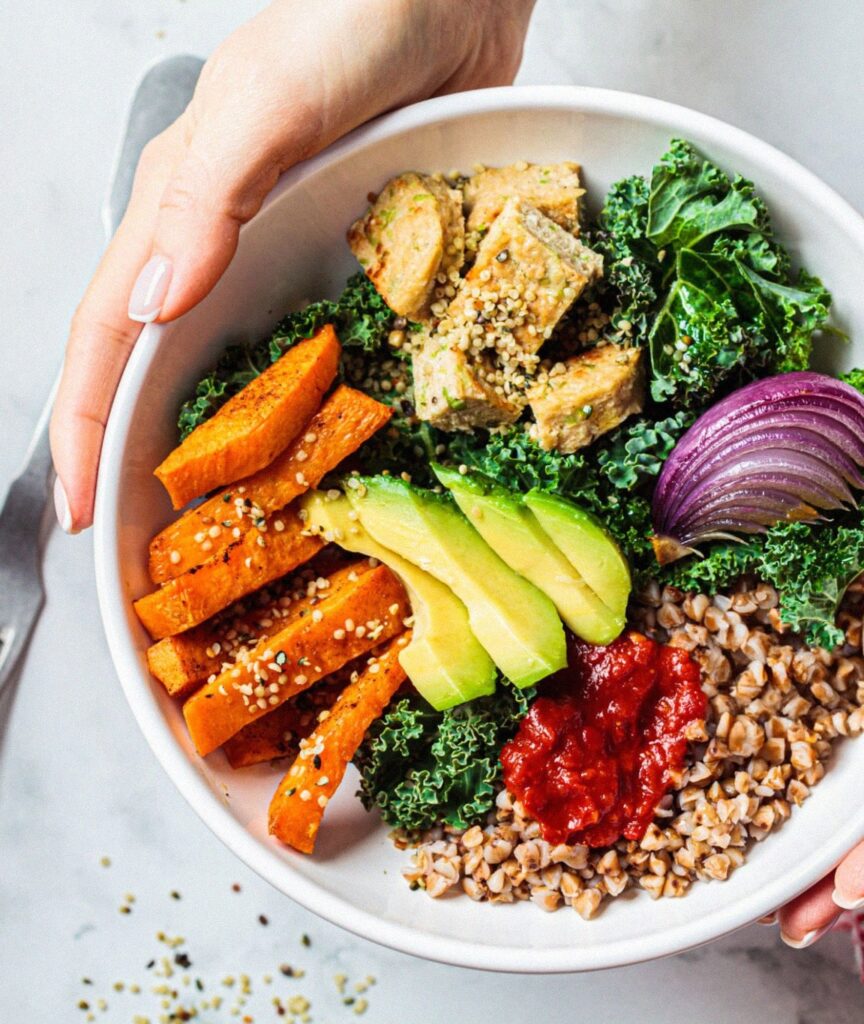How to Get Rid of Inflammation
Natural Remedies and Lifestyle Changes
Inflammation is the body’s natural response to injury or infection, but chronic inflammation can lead to a host of health problems, including arthritis, heart disease, and even cancer. Inflammation is also a hidden reason for everyday symptoms such as fatigue, insomnia, bloating and digestive issues, chronic pain, stubborn weight holding, and anxiety.
Learning how to get rid of inflammation is crucial for maintaining overall well-being and enhancing quality of life.
By incorporating natural remedies and making key lifestyle changes, you can effectively manage and reduce inflammation, paving the way for a healthier future. This blog post will explore various strategies to help you achieve this goal, from dietary adjustments to stress management techniques.
What is Inflammation?
Before diving into ways to combat inflammation,
it’s important to understand what it is and how it affects the body.
Inflammation is a natural response initiated by the immune system in response to injury or infection. It causes redness, swelling, heat, and pain in the affected area as the body works to fight off foreign invaders and heal damaged tissues.
While acute inflammation is a crucial part of the healing process, chronic inflammation occurs when this response persists for an extended period, leading to tissue damage, other health conditions and daily symptoms including stubborn weight, low energy, bloating and chronic pain.

Causes of Inflammation
Understanding what triggers inflammation is essential in addressing it effectively.
Various factors can lead to chronic inflammation, some within our control and others not.
These include:
- Dietary choices: Consuming a diet high in processed foods and sugars can contribute to inflammation.
- Hidden Foods: We are all unique and one of the top causes of inflammation are foods that are reacting in someone’s body, silently triggering inflammation.
- Smoking and tobacco use: Tobacco products can cause and exacerbate inflammatory responses.
- Exercise habits: A sedentary lifestyle can increase inflammation, whereas regular physical activity can reduce it.
- Sleep quantity and quality: Poor sleep can heighten inflammation levels.
- Alcohol use: Excessive alcohol intake can contribute to inflammation.
- Persistent viral or bacterial infections: Chronic infections can trigger ongoing inflammation.
- Allergens and environmental pollutants: Exposure to harmful substances in our air, water, and food can lead to inflammation.
- Stress: Chronic stress can elevate inflammation in the body.
As you can see, there are many lifestyle choices that we can implement, which can significantly reduce chronic inflammation, and the resulting conditions and symptoms.
Notably, our dietary habits are crucial in affecting our inflammation levels. Adopting a balanced and nutritious diet can lower the risk of chronic inflammation and promote better overall health. We will also want to identify the foods that are inflammatory to our body.
Foods to Remove to Reduce Inflammation
One of the most efficient and effective ways to reduce inflammation and to improve the resulting health symptoms, is by eliminating foods that can be common inflammatory triggers.

When doing this, it is important to only remove these, for 2-3 weeks. There is a systematic process for removing these foods, and then also simultaneously replacing these foods with foods that are commonly inflammation reducing foods.
The quickest and most efficient way to get rid of inflammation is to temporarily remove all foods that could potentially trigger inflammation. It is important to note that these foods are on a spectrum of reactivity for the general population.
While some of these foods are more commonly inflammatory and people are familiar with these foods being a source of inflammation, there are other foods that can be more surprising foods that could trigger significant inflammation. For this reason, when attempting to resolve inflammation, it is essential to have a process where one learns to hear their own body to receive clarity on the foods that are most inflammatory to them.
Common Inflammatory Foods
There are over 1500 studies showing the negative health effects of ultra-processed foods, even so-called healthy ones. These are foods that inflame most everyone and it is best to reduce or minimize these foods in our daily life, even beyond an elimination diet.
- Sugar
- Alcohol
- Ultra-Processed foods
Other Common Inflammatory Foods
Many people find that at least one or more of these foods can be a hidden source of inflammation in their body. To test for potential inflammation triggers, it’s essential to temporarily omit them all at once from your diet. Choose a specified time of 2 – 3 weeks. Implementing a structured process will help you identify which foods might be causing inflammation in your body.
- Gluten
- Dairy
- Corn
- Soy
- Processed Grains
Inflammatory Seed Oils
Seed oils can frequently be sources of inflammation, particularly canola, sunflower, soybean, and corn oils. Since most restaurants use seed oils, it’s important to be mindful of this when dining out. During an elimination process, it’s best to use oils sparingly and opt for high-quality alternatives such as olive oil, avocado oil, or coconut oil.
- Avoid all seed oils known to cause inflammation
Surprising Inflammatory Foods
Citrus and citric acid
Garlic
Onion
Nightshades (e.g., tomatoes, potatoes, eggplant, pepper, and paprika)
Animal proteins (temporarily): chicken, red meat, pork
Nuts
Additional Considerations
- Water from plastic bottles: opt for high-quality water sources.
- Coffee: Can be inflammatory for some people.
When possible, opt for organic fruits, veggies, legumes, grains and animal proteins to avoid inflammatory glyphosates, chemicals and pesticides.
There are many other foods that could be less frequently inflammatory for some people, including lectins, histamines or fodmaps. But starting with the foods listed above is the best starting point for receiving the most efficient results and to receive clarity.
It’s important to note that this elimination should be temporary, lasting for about two weeks. This process helps in identifying and removing hidden sources of inflammation that might not be immediately apparent. To effectively identify inflammation triggers, it’s crucial to maintain a daily log. Track your symptoms and the foods you consume each day. This will help you pinpoint which foods might be causing inflammation in your body.
Also, remove all supplements temporarily, as they can contain additives that might be inflammatory. Please also note that it’s crucial to keep a daily log where you track your symptoms and foods each day.
Natural Remedies for Reducing Inflammation
Anti-Inflammatory Diet
Adopting an anti-inflammatory diet involves consuming whole, nutrient-rich foods brimming with antioxidants. These antioxidants work by neutralizing free radicals—reactive molecules that can instigate inflammation when not properly managed. Incorporating specific anti-inflammatory foods into your diet can significantly help in reducing inflammation.
- Fruits: Deeply colored fruits like cherries, pomegranates, grapes, and blueberries. Whenever possible, choose organic fruits to avoid inflammatory pesticides and chemicals. Organic fruits can help reduce the potential for inflammation caused by these substances.
- Vegetables: Cauliflower, Brussels sprouts, kale, cabbage, bell peppers, and broccoli. Whenever possible, choose organic vegetables to avoid inflammatory pesticides and chemicals. Organic is best, as it helps reduce the potential for inflammation caused by these substances.
- Healthy fats: Avocado oil and olive oil.
- Nuts: Almonds and other varieties.
- Spices: Cinnamon, fenugreek, and turmeric.
- High-fat fruits: Olives and avocados.
- Green tea: Opt for organic green tea when possible and avoid plastic tea bags. Instead, use organic loose leaf tea or natural tea bags made from materials like coconut or other natural fibers. This helps reduce the potential for inflammation caused by pesticides, chemicals, and plastics.
- Fatty fish: Anchovies, herring, salmon, mackerel, and sardines.
Incorporate High-Fiber Carbohydrates
Opting for high-fiber carbohydrates plays a vital role in managing inflammation. Limit your intake of highly processed, low-fiber carbs found in many white flour products such as pasta, white bread, and most cold cereals. Instead, choose high-fiber carbohydrates like whole grains, starchy vegetables, and legumes.
Examples of High-Fiber Carbohydrates
- Whole grains: brown rice, barley, oats, quinoa, buckwheat, and farro
- Starchy vegetables: potatoes, sweet potatoes, winter squashes, corn, beans, beets, and peas.
However, be aware that conventional grains and legumes are frequently sprayed with high levels of glyphosates and other chemicals, which can trigger inflammation and cause various symptoms. When possible, opt for organic options to minimize these risks.
Increase Your Fiber Intake
Fiber is crucial for maintaining gut health and impacting overall well-being.
Despite its importance, most Americans consume only around half of the recommended fiber intake. Aim for 25 grams of fiber per day if you’re a woman, or 38 grams if you’re a man.
Fiber originates from plant-based foods and includes two types: insoluble and soluble.

Found in wheat bran and vegetables, this type of fiber does not absorb water and adds bulk to your stool, aiding digestion by ensuring smooth and easy bowel movements.
Examples include the skins, seeds, and fibrous parts of fruits and vegetables, as well as nuts, seeds, and bran in whole grains.

Soluble Fiber
Absorbs water and forms a gel-like substance, stabilizing blood sugar levels after meals.
This type of fiber also promotes satiety, lowers cholesterol, supports hormonal balance, and encourages regular bowel movements. Foods rich in soluble fiber include beans, legumes, flax seeds, chia seeds, and whole grains such as quinoa and millet.
Both fiber varieties are essential, so incorporating a diverse range of whole plant foods into your diet is key to meeting the daily recommended intake.
Transitioning to a fiber-rich diet can significantly enhance your health by improving digestion and reducing the risk of several chronic conditions.
Select Plant-Based and Leaner Animal Protein Sources
Focus on incorporating more plant-based protein sources into your diet. These include options such as beans, lentils, nuts, and seeds. Opt for lean animal proteins like fish, chicken, and turkey. Proteins can be some of the more hidden sources of inflammation, even ‘healthy’ proteins. Yet, they are essential to our health and vitality.
Learn to tune into your own body to know which ones work best for you and to avoid those that are secretly triggering inflammation.
When it comes to red meat, it’s important to know your own body. Organic grass-fed beef may work well for some, while it could be a source of inflammation for others.
Additionally, due to chemicals, hormones, antibiotics, animal feed and processing methods, processed meats will be inflammatory to many people. Therefore you will want to limit your consumption of processed meats.
Be cautious of charring during grilling or cooking meats, as this can create compounds that may lead to inflammation.

Be Mindful of Your Fat Sources

When cooking, prioritize using the right fats to avoid inflammation.
For higher-heat cooking, opt for heat stable oils which are less prone to oxidation. This oxidation leads to inflammation.
Some of the best oils for cooking include: a very high quality olive oil rich with polyphenols. Inferior Olive Oils will oxidize and break down with high heat.
Other oils that are more heat stable include high-quality avocado oil, or coconut oil.
If someone does well with dairy, they can also use organic butter or ghee.
Avoid trans fats, which are found in deep-fried foods and any items containing partially hydrogenated oils.
Making these mindful choices regarding fat sources can significantly impact your overall health and help reduce inflammation.
Balance Your Omega-6 to Omega-3 Ratio
Incorporate more omega-3-rich foods into your diet. This includes omega-3 enriched eggs and wild-caught fatty fish such as salmon, mackerel, anchovies, sardines, and herring.
For plant-based options, consider flax seeds, chia seeds, hemp seeds, and walnuts.
Simultaneously, reduce your intake of omega-6-rich oils commonly found in ultra-processed foods, including soybean, safflower, corn, grapeseed, and cottonseed oils.
Cut Down on Sugar Intake
The average American consumes about 17 teaspoons (68 grams) of added sugar daily, exceeding the recommended limit by 2-3 times.
Limit added sugar to less than 6% of your total daily calories to maintain a healthy diet. For men, this means no more than 9 teaspoons (36 grams) per day, and for women, less than 6 teaspoons (24 grams) per day.
Always check the labels of food products for their sugar content, keeping in mind that 1 teaspoon of sugar equals approximately 4 grams.
Avoid sugary drinks such as soda, lemonade, sweetened teas, juices, and sweetened coffees. Additionally, limit the consumption of desserts, pastries, candies, and other sweets.
Many foods, including bread, salad dressings, condiments, cereals, yogurts, pasta sauces, crackers, and chips, often contain hidden added sugars.
Although honey and maple syrup are less refined, they still have added sugars.

Limit or Avoid Alcohol
Alcohol can disturb the gut microbiome and contribute to ongoing inflammation. To manage this, consider minimizing your alcohol consumption.
If you choose to drink, aim to keep it to one drink per day or less. This moderation can significantly benefit your inflammatory balance and overall well-being.
Add Tea and Spices with
Anti-Inflammatory Benefits to Your Diet

Incorporate teas and spices known for their anti-inflammatory properties into your daily routine.
Organic Black, white, and green teas are excellent choices as they contain antioxidants and polyphenols that combat inflammation. Some herbal teas also offer similar benefits. In addition, various herbs and spices contain compounds that help tackle inflammation.
Add rosemary, garlic, oregano, ginger, turmeric, cloves, nutmeg, cinnamon, and cayenne to your meals. These flavorful additions not only enhance taste but also promote better health and reduce inflammation.
Testing and Personalizing Your Anti-Inflammatory Diet
It’s important to understand that while general guidelines can be helpful, the effectiveness of certain foods can vary from person to person.
Some foods typically classified as anti-inflammatory, like garlic, onion, tomatoes, and citrus, can actually trigger inflammation in certain individuals.
Therefore, it’s essential to test these foods with your own body and pay attention to how they affect your health.

Signs That You Are Free of Inflammation
You will know you are free of inflammation if you notice the following improvements in your health
- Reduction in pain or complete reversal of pain, even from old injuries.
- Improved sleep quality.
- Increased energy levels.
- Enhanced cognition and mental clarity.
- Disappearance of bloating and gut issues.
- Emotional balance and a more positive outlook.
- Spontaneous weight loss.
Conclusion
Understanding how to eliminate inflammation through dietary choices can be a powerful tool for enhancing your overall health and well-being. By focusing on consuming anti-inflammatory foods such as fruits, vegetables, lean proteins, and healthy fats while avoiding processed and sugary foods, you can significantly reduce inflammation in your body. Implementing these guidelines helps manage inflammation and supports a balanced diet that promotes longevity and vitality. With mindful eating and lifestyle adjustments, achieving an anti-inflammatory diet is both attainable and beneficial for your long-term health. Remember, it’s crucial to listen to your body and adjust your diet based on your individual responses to different foods.
